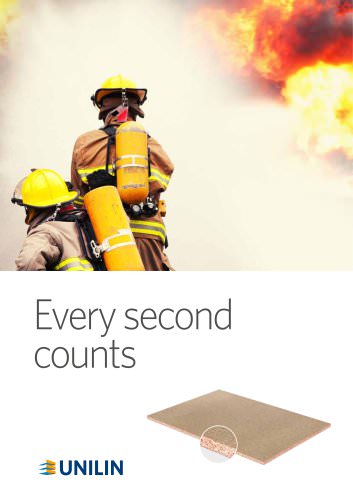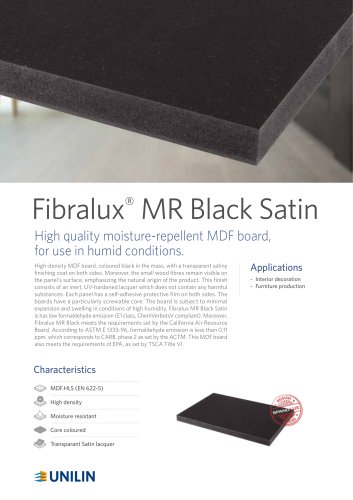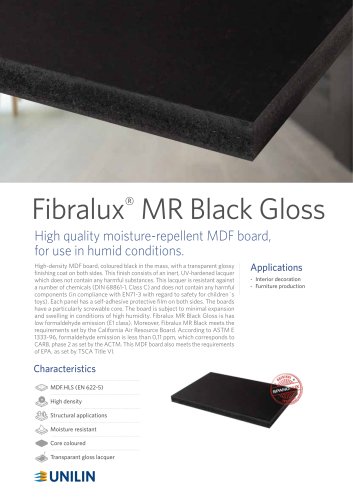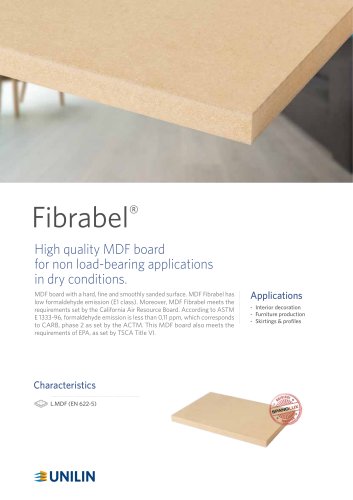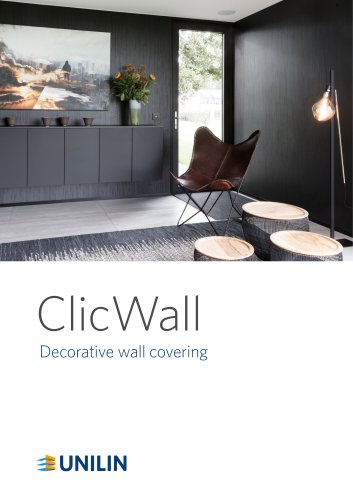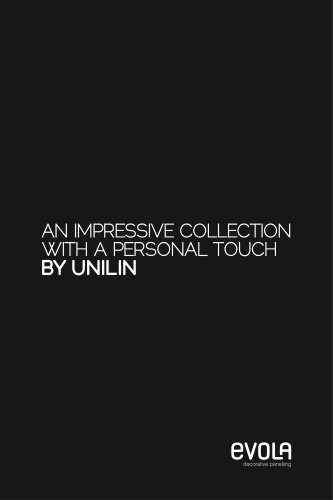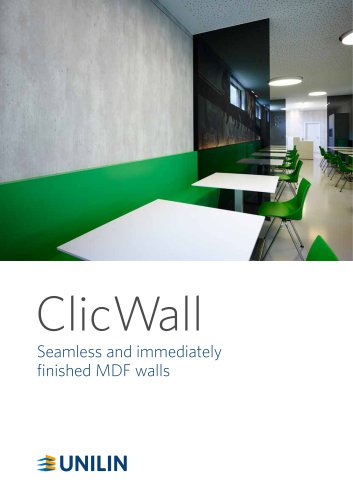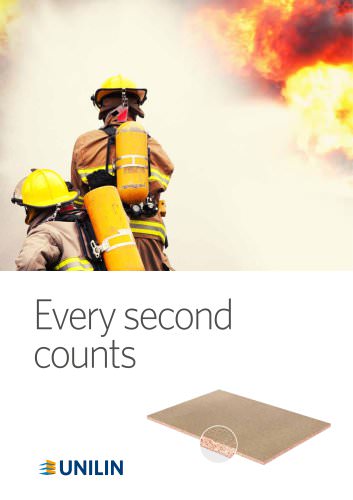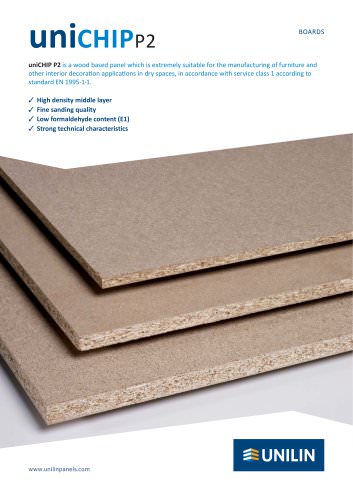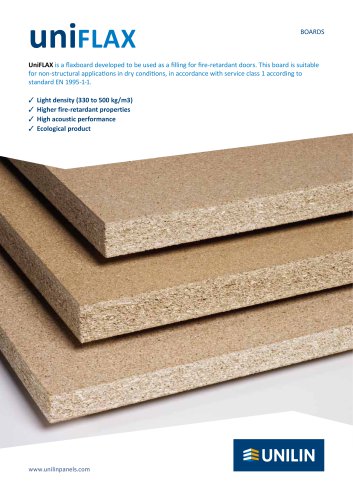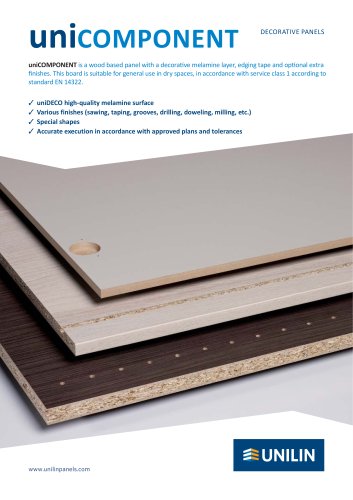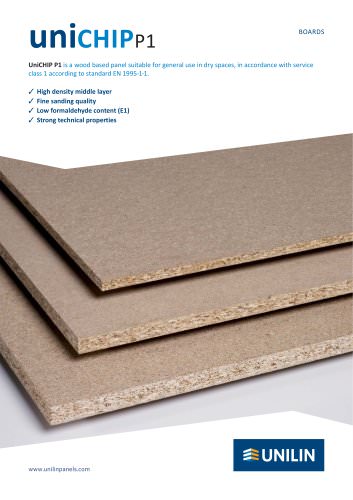
Catalog excerpts
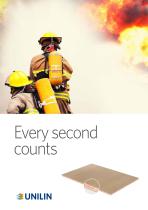
Every second
Open the catalog to page 1
Sanded Tongue and groove Antivlam or HydroFlam chipboard panel STANDARD PROPERTY - Fire retardant POSSIBLE EXTRA OPTIONS Tongue and groove joint (optional) Lacquer finish
Open the catalog to page 2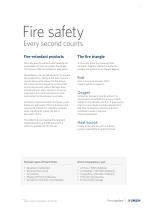
Fire safety Every second counts Fire-retardant products Not a day goes by without a fire breaking out somewhere. No one can predict the danger. The cause is often an accident or negligence. A fire starts when the following three e lements, together referred to as the fire t riangle, are resent to a sufficient degree. p Nevertheless, we can and should try to prevent the spread of fire. During a fire, every second counts, because the slower the fire grows, the more time the emergency services have to limit injuries and material damage. Every minute and even every second is of crucial...
Open the catalog to page 3
What is a fire? Start and spread Fuel, oxygen and heat source If one of these elements is missing, there is no risk of fire. Sufficient oxygen will always be present in the air, however. Heat sources, meanwhile, are mainly created by accident and are therefore more difficult to control. This leaves only one element under our control: the combustible material. We can s ignificantly improve fire safety through the use of fire- etardant materials. r Spread of the fire As soon as a fire starts, it can spread in three ways: 1. Through radiation Large flames can spread the fire to materials a...
Open the catalog to page 4
Characteristics of a fire The four phases in the start of a fire. The fire has consumed all its fuel Fire starts Phase I Incipient phase Phase III The fully-developed phase A fire starts as a result of an ignition. The temperature rises slowly. The fire remains at its most intense for a longer period. The temperature also remains at its highest point until the fire has consumed its fuel. Possible fire prevention strategy in this phase: • prevent ignition sources wherever possible. • check the ignition characteristics of the products/materials. • use construction products with outstanding...
Open the catalog to page 5
Material properties Wood protects itself! Fire behaviour It is important to know how construction materials will behave in the event of a fire. Will they ignite easily? Will they contribute to the spread of a fire? Will they create large amounts of smoke and gas? But there are other questions too. How will the material respond to increased temperatures? Will it deform, bend (like steel), split (like plaster) or melt (like plastic)? Wood When a wood construction falls prey to fire, it undergoes a progressive temperature increase. When wood is heated, it gradually reaches a temperature of...
Open the catalog to page 6
European legislation The UNILIN, division panels fire-retardant panels prevent flame spread and do not contribute to flashover. Label Since 1 April 2004, all wood panels intended for use in construction must have a CE label. This label must be displayed on the panel itself (official stamp), on the packaging (official label), or indicated in the sales documents. This way, the manufacturer confirms that the product meets all legal requirements, in particular the European directives on construction products (Construction Products Regulation - CPR) and standard EN 13986 «Wood-based panels for...
Open the catalog to page 7
Spread of the fire Flame spread and flashover Flame spread The flame spread is the speed with which flames spread over the surface of a given m aterial. This speed differs from material to material. The spread of the fire is not only determined by the flame spread, but also by the heating of non-combustible materials. This heating can cause the formation of combustible gases, which can in turn ignite other materials ( flashover). Reaction to fire of construction materials What is ‘Reaction to fire’? Reaction to fire is the measurement of how a material contributes to the fire to which...
Open the catalog to page 8
Walls & ceilings The Single Burning Item or SBI test (EN 13823) is used to determine the reaction to fire of walls and ceilings. This test determines the potential contribution that a material makes to the fire when a burning object is located in the corner The SBI test examines flame spread, heat generation, smoke development (s1, s2, s3) and flaming droplet formation (dO, d1, d2). EN 13823 standards clearly define minimum requirements values have been defined for Euroclass F. UNILIN's fire-retardant Antivlam chipboard is classified as B-s1,d0, where Euroclass 'B' refers to extremely...
Open the catalog to page 9
Fire resistance of a construction element Definition Main observation criteria The fire-resistance tests establish the b ehaviour of a specific construction element when exposed to certain heating and pressure conditions, like those present during a fully- eveloped fire. The combustibility is the d property of composite constructions. This is a test of structures rather than of separate materials. The performance criteria below are the most commonly observed criteria in fire-resistance tests: Until recently, manufacturers of products with fire-resistant properties had to carry out tests...
Open the catalog to page 10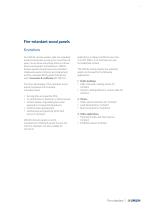
Fire-retardant wood panels Knowhow For UNILIN, division panels, safe, fire-retardant products have been a priority for more than 40 years. So we know everything there is to know about wood panels’ fire behaviour. UNILIN, division panels manufactures fire-retardant chipboard panels (Antivlam and HydroFlam) and fire-retardant MDF panels (FibroFlam) with a Euroclass B certificate (EN 13501-1). The main advantages of fire-retardant wood p anels compared with standard, untreated wood: • • • • • burning time increased by 25% no contribution to flashover or flame spread limited release of...
Open the catalog to page 11
Possible applications: melamine, lacquer, laminate or veneer • Fire-retardant chipboard for use in dry environments • Euroclass B-s1, d0 • Powerfully fire-retardant chipboard for applications in dry environments • Compliant with the stringent ‘Class 0 British Standard’ and the Wheelmark certificate standards • Fire-retardant and moisture resistant construction board for structural applications • Fire-retardant MDF board for industrial processing and interior applications in dry environments • Fire-retardant Antivlam chipboards • 90-minute fire resistance • Lightweight chipboard for interior...
Open the catalog to page 12All Unilin Panels catalogs and technical brochures
-
Decorative Range 2022-2026
36 Pages
-
Fibralux® MR Black Satin
3 Pages
-
Fibralux® MR Grey Super Matt
3 Pages
-
Evola-HPL CC
2 Pages
-
Fibralux® MR Black Gloss
2 Pages
-
Fibrabel®
2 Pages
-
I-Joist
3 Pages
-
RWH
2 Pages
-
Hydroflam
2 Pages
-
Betonspan
2 Pages
-
Durelis Vapourblock
2 Pages
-
Hydrolis
2 Pages
Archived catalogs
-
Full range 2017 - 2021
13 Pages
-
Evola
15 Pages
-
Essentia
8 Pages
-
Antivlam Class 0
16 Pages
-
uniCHIP p2
3 Pages
-
uniFLAX
2 Pages
-
unipaint
2 Pages
-
unicomponen
2 Pages
-
unichip p1
2 Pages
-
unimdf comfort
3 Pages

